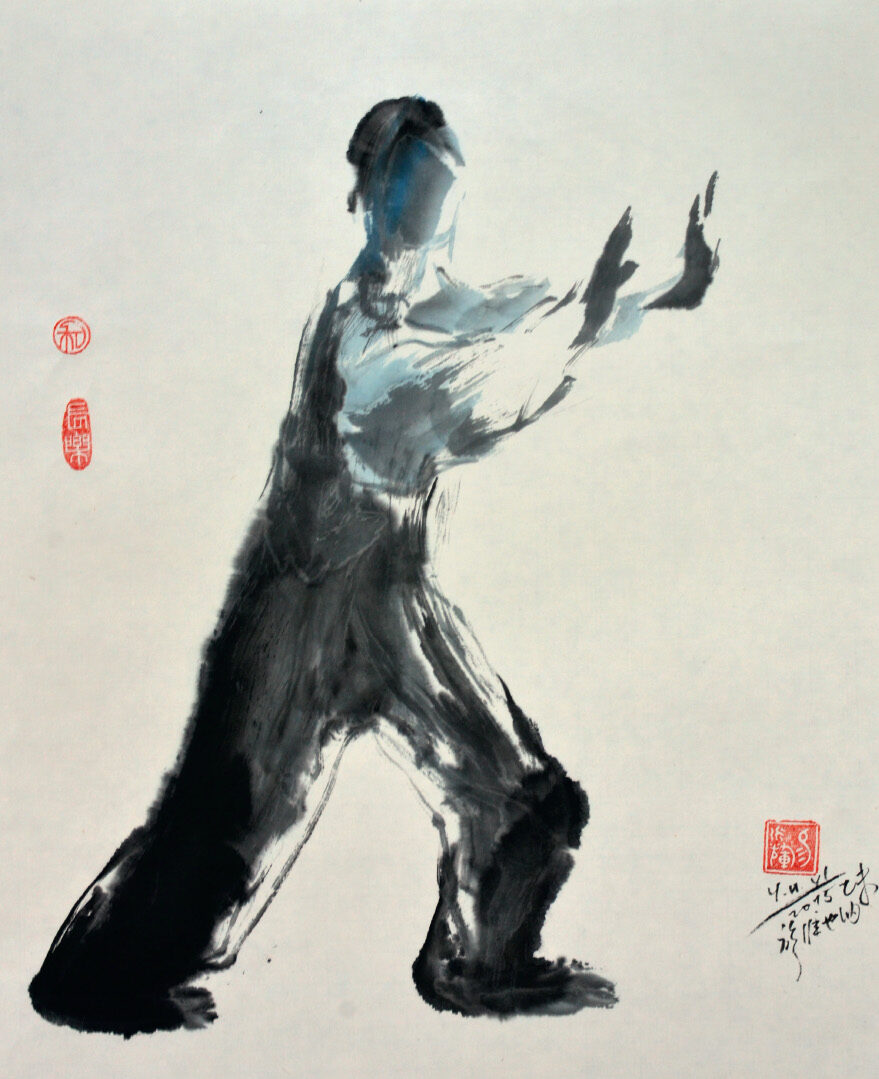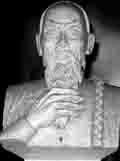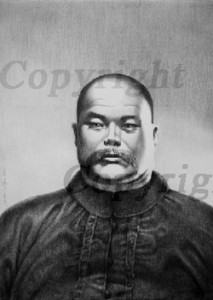Tai Chi History and Legend
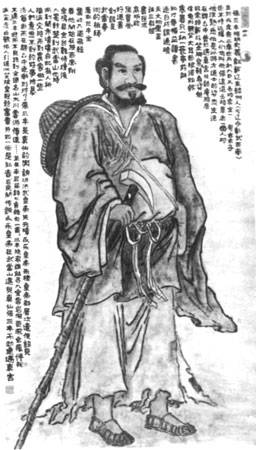
In his own preface to the ‘Encyclopedia of Taijiquan’ published in 1933, Yang Cheng-Fu recorded a sentence attributed to his grandfather Yang Lu-Chan. “Taijiquan was created by Zhang San-Feng at the end of the Song Dynasty. Development continued through one, Wang Zhongyue, Chen Zhouting, Zhang Songki, Jiang Fa.”
ƒXu Zhiyi said something similar in his ‘General Introduction to Taijiquan’, published in 1927 by the ‘Weng Hua Publishing House’ “The Northern section of the Wudang art was Li Yishe’s ‘Observations on Taijiquan’. The first draft was published in 1867. The first sentence of this draft observes that, “Taijiquan was created by Zhang Sanfeng in the Song Dynasty”. However, when it was published in 1881, the opening sentence was changed to read: “No one knows who was the creator of Taijiquan”.
In li Jiyings ‘Taijiquan Textbook’, he included a preface by li Ruidong, who concluded that, “The creator of the Northern section of the Wudang school was the true upholder of the Zhang Sanfeng theory”.
From the Journals of Lu Kun, we learn:
Zhang Sanfeng is recorded to have been widely read and well aqainted with the teachings of Confucianism, Buddhism and Taoism. He considered Taoism to be the true reflection to the universe. He founded the School of Wudang Taoism and created a system of pugilism practise called Taijiquan. He stands a milestone in Chinese Wushu.
Joseph Lee in ‘The History of Chinese Science and Technology’ remarked, “The name of Zhang Sanfeng is now firmly related with Taijiquan, a major school of Chinese Wushu”. He goes on to say, “if one really wants to track down the roots of Taijiquan one cannot fail to value Zhang Sanfengs theistic thoughts on Taoism”.
In ‘The Origins of Wudang Taiji’ Du Yuwan says, “Taijiquan is generally said to be passed down from Zhang Sanfeng, but when we get down to the roots we find its beginnings further back in history”.
In 1990 the magazine ‘The Soul of Wushu’ published a series of articles entitled ‘The Original Taijiquan’. One contribution came from the chief Taoist monk of the Temple Baijun (White Cloud) in Beijing. ‘An Shenyuan’. When questioned by reporters, remarked that, “In the school of Taoism, apart from Zhang Sanfeng, there were many other talented people who have contributed much to the formulation and development to Taijiquan”.
There is no historical documentation on the life of the legendary Zhang Sanfeng. It is difficult to factually attribute the creation of Taijiquan to one Zhang Sanfeng. He is however a most important reference when discussing the philosophy behind Taijiquan.
One tradition suggests that Taiji developed in the 12th century during the Song Dynasty. Emperor Huizong (reigned 1101-1126) is reputed to have summoned a Taoist priest to attend the capital of Kaifeng. Zhang Sanfeng is said to have received the imperial summons to travel from Mount Wudang.
On his journey he was attacked by a band of robbers and was forced to retreat. During his rest he was visited by the spirits of Wudang mountain and received an inspirational new Wushu routine. The following day Zhang Sanfeng used his inspired skills to defeat 100 bandits.
A second legend attributes the same Zhang Sanfeng to be living in the Yuan dynasty. In this story, while studying the mysteries of Taoism and trying to get to grips with the secrets of immortality, he observed the posturing of numerous animals. One day he saw a snake and crane fighting and was inspired, by the Yin and Yang qualities of their attacks and evasions, to develop the art of Taijiquan. So Zhang Sanfeng is accredited with restructuring martial arts along inspirational lines. As a Taoist monk, he connects the art with the philosophy of Yin and Yang, the I’Ching and its Paqua diagrams. The connection between Taijiquan, Lao Tzu, the Tao Te Ching are implicit in the legend of Zhang Sanfeng.
Wang Sung-Yeuh
Another popular thesis claims that the founder of Taijiquan remains unknown, but that its development can be traced to Wang Tsung-Yeuh of Shanzi Province.
According to the thesis, Wang Sung-Yeuh introduced the system to Honan Province during the Ch’ien Lung period (1736-1795) of the Ch’ing Dynasty. The value of Wangs contribution is enhanced by his authorship of ‘Treatise on Taijiquan’. This manual on Taijiquan has remained as an inspirational guide to generations of practitioners.
Jiang Fa
In volume 16 of the ‘Journal of Beijing Institute of Physical Education’, it states that Jiang Fa began his study of Taijiquan with Wang Sung-Yeuh. He was instructed by Wang for ten years and grasped the substance of the art. He was well versed in both the Northern and Southern versions of the Wudang Internal Wushu Arts. He was considered an expert and authority in this field.
Chen Chang-Xing (1771-1853)
Chen Chang-Xing was a student of history and literature. It is recorded that he began his study of Taijiquan when he was six. He studied Wushu arts with Jiang Fa for 20 years and made rapid progress.
In his book, ‘Taijiquan Proper’, by Du Yuwang, he passes the opinion without evidence, that Wang Sung-Yueh and Jiang-Fa both trained in the nature of Zhang San-Feng Wudang International Boxing.
The discovery of Wang Tsung-Yueh’s manual, ‘Treatise on Taijiquan’. It is claimed that Wang ‘Sung-Yueh’ was ‘Jiang Fa’s’ teacher and ‘Jiang Fa’ was in turn Chen Chang-Xings teacher.
Whilst stories of Zhang San-Feng can be very appealing, historical authenticity remains questionable. Whether he developed the art of Taijiquan, Mount Wudang is noted for its scenic beauty and has been a centre of Taoism since the 7th century. According to historical records preserved at the mountain, there have been two persons named Zhang San-Feng.
In ‘A Guide to Chinese Martial Arts’, by Li Tianji and Du Xilian one Zhang San-Feng was renowed for his combat skills and lived in the ‘Song Dynasty’ (960-1279). The other, a celebrated Taoist, lived during the Ming Dynasty (1368-1644), was very adept with swordplay.
There have been many tales handed down about these figures. Both men combined Taoist spiritual cultivation with their Wushu skills. Nevertheless, many researchers of Wushu history consider there to be insufficient evidence to name either one of them as the founder of Taijiquan.
Chen Wang Ting
Chen Wang Ting, 9th generation of the Chen family Whatever the legends of its earliest origins, Taijiquan can be traced to Wenxian County, Henan Province. Here we have the earliest connections to its present form. However, even here we come across contradictions. The local people have two explanations regarding its precurser. The first and perhaps the most commonly accepted is that Taijiquan was created by Chen Wang-Ting and the place of its origin was the Chen family village of Chenjiaqou.
The other version claims it was brought from Shanxi Province by the previously mentioned Jiang Fa. Jiang Fa is reputed to have brought the art to his home village, Xiaoliu also in Wenxian County.
Both Chen and Jiang were acknowledged as accomplished Wushu masters. Chen Wang-Ting in his latter years, researched Wushu methods for self defence, finally developing a new style of his own. Jiang Fa was to become a highly skilled Wushu master.
Whether or whichever of these men developed or created Taijiquan, it was from this period that the spread and transmission was to take place.
There is a connection with Chen Wang Ting and Taoist internal theories. In a poem he wrote, “The Huang Ting is my constant companion”. (The Huang Ting Jing) is an important early Taoist canon on health through breathing exerice.
Chen Wang Ting is documented as the founder of the Chen Style Taijiquan tradition. He is credited with the creation of five routines and in addition taught Pao Tui and Long Chuan. He served as an army officer in the early 17th Century.
The original Chen Style was referred to as the Large Frame Style, now more commonly known as Lau Jar (Old Frame). The Old Frame consisted of 83 moves.
Chen Xiao-Wang
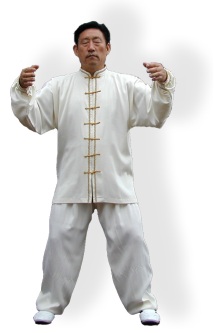
During the 19th generation, modification to the routine was to take place by Chen Chang-Hsin. This was also acknowledged to be Large Frame, but was to become known by its practitioners as Hsin Jar (New Frame).
Another modification took place by Chen Chin-Ping. He changed the movements of Hsin-Jar, making the movements tighter and smaller. At the time of these changes Chen Chin-Ping was a resident in the village of Zhaoboa. His Form is referred to as the Zhaoboa Jar to distinguish ot from Lao Jar and Hsin Jar.
During the 20th century members of the Chen family have created forms with a reduced number of movements. These creations have generally eliminated the many repetitions that appear in the Old Style. 19th Generation Master Chen Xiao-Wang has created Chen Style 38 Forms, Master Feng Zhigang has contributed Chen 24 Forms, Master Kan Gui Xiang has produced 36 Forms Chen Style Taijiquan.
A further contribution came from the Chinese State Wushu Authorities. This was to facilitate the growing popularity of Taijiquan competition. The Chinese Wushu Association of China organised a group of masters and professors to develop standardised routines for competition to include Yang, Chen, Wu and Sun Styles. The Chen style developed has 56 Forms. The routine is a merger of traditional sets one and two.
Chen Style Taijiquan remained very much a family and village art until Chen Fa-Ke (17th generation 1887-1957) was invited to Beijing in the 1920’s. He was the first of the Chen family to teach publicly and make the departure from traditional methods.
Chen Xiao-Wang (19th generation) is the grandson of the famous master Chen Fa-Ke and is the head of the Chen tradition. Chen Xiao-Wang is living in Australia.
The Yang Family Taijiquan
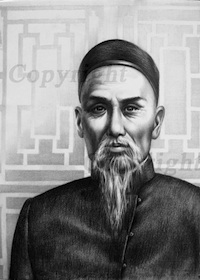
Yang Lu-Chan came from Yongnian County, Hebei Province, North China. Coming from a poor family he left home quite young to seek work of a menial nature. It is recorded that he was employed by the Chen family in the village of Chen Jiaou. While he was with the Chen family, he acquired the art of ‘Lao Jia’ (Old Frame) Taijiquan, ‘Tui Shou’ (Push Hands) and Weapon training.
After spending 20 years with his teacher, Chen Chang-Xing, he returned to his family home in Yongnian. He had become a skillful Wushu master. His martial expertise was held in high regard by his contemporaries and was referred to as Soft Fist or Cotton Boxing. His skill was appreciated for its flexible attack and defence and the ability to overcome the very strong.
Yang Lu-Chan travelled to Beijing where he was engaged by the Royal Court to teach Wushu. As his fame spread for his boxing skills he was nicknamed ‘Yang the Invincible’.
Yang Chien Hou’s son Yang Chen-Fu was to become perhaps the most famous name associated with Taijiquan during the 20th century. Yang Cheng Fu’s sons and descendants have continued the Yang tradition since his passing in 1936. There is no photographic evidence of Yang Lu-Chan’s Taijiquan but it is generally accepted that modifications and revisions have been initiated by the succeeding generations into what is referred to as Da Jia (Big Frame). Standardisation began with Yang Chien Hou and continued with Yang Cheng Fu.
Yang Cheng Fu is reputed to have taught many hundreds of students and popularised Taiji throughout China. He carried his Wushu to many areas of China, Nanjing, Shanghai, Hangzhou, Guangzhou and Hankou. Thus he continued the work initiated by his father and grandfather first from the village and then the capital and now throughout China, precipitating its introduction to the rest of the world.
There is of course pictorial records of Yang Cheng-Fu. His 10 Essentials for training along with family records. From his photographs Yang Cheng-Fu can be seen as a big man. It is recorded that he could deliver a stunning blow with very little show of action. When he struck an opponent he would be thrown back serveral metres. While many pugilistic schools may consider injuring the opponent as the main objective, Yang Cheng-Fu was renowned for his ability to neutralise and overpower without injuring his opponent.
The Tang tradition passed to his three sons Yang Shou Chung (1909-1985), Yang Zhen-Ji and Yang Zhan-Dow. These two still teach in China and conduct seminars throughout the world.
Yang Cheng-Fu trained many famous practitioners and their lineage can be traced today. These include :
Fu Zhongwen
Dong Ying-Jieh
Chen Wei-Ming
Cui Yishi
Li Chunnian
Wu Huichuan
Cheng Man Ching (1901-1975)
Cheng Man Ching was a remarkable person. He was a master of the ‘Five Excellences’, Medicine, Caligraphy, Poetry, Painting and Taijiquan. He published ‘Chengs 13 Chapters of Taiji Boxing’ in 1950. In 1967 in collaboration with Robert W. Smith, they published ‘Tai Chi’, the Supreme Ultimate exercise for health, sport and self defence.
In their book, it is said that the author, Cheng Man-Ching, learned personally from Yang Cheng-Fu for nearly a decade. Whilst the Yang family do not place any emphasis or even refer to a relationship between Yang Cheng Fu and Cheng Man-Ching. In the introduction to the translation of Cheng Man-Chings book, ‘Cheng Tzu’s 13 Postures’, his widow, Madame Cheng, remarks that her husband was Yang’s last disciple and studied with im for six years. It would appear that Cheng Man Ching is little known in mainland China. This may have some political significance as he was a supporter of Chiang Kai Shek. He moved to Taiwan after the fall of China to Mao Tse Tung.
Cheng Man-Ching took from the Yang style many elements into his creation of ‘Chengs 37 Steps’. His method, whilst deleting many of the repetitions from the Yang Long Form retained the principles and characteristics of the Yang family. With the exclusion of China, Chengs form enjoys wide favour including Taiwan, Malaysia, USA and Europe.
Cheng Man-Ching in addition to being an expert, should be seen as a pioneer, bringing Taijiquan to the West, where it was virtually unheard of.
Like all masters of Taijiquan hes emphasised relaxation, health and well being. He was the first to simplify and shorten the Long Form. Accessible to a larger audience his system includes Push Hands and Weopons.
Many Cheng Man Ching practitioners consider this style to be separate in its uniqueness.
Chen Chang-Xing
Besides his own claim to fame as a Wushu master, Chen Chang-Xing passed his art to Yang Lu-Chan. So he has a special role in the development of Taijiquan. The First Routine (Lao Jia) is the oldest recorded Form and the consensus is that all others are derived from it. This was the routine practised by Chen Chang-Xing. It emphasises the quality of Chang-Ssu-Chin (Silk Reeling Practise). This is utilised to develop inner strength. In can develop spiralling energy through the whole of the body and limbs. In the exercise one gains understanding of Yin and Yang, substantial and insubstantial.
Chen You-Pen
Chen You-Pen is credited with the development of the ‘Chen New Style’ (Xin Jia). This Form is very popular with modern practitioners and employs characterisitics of Pao Tui (Canon Fist) with its fast release of energy (Fa-Jing). This is combined with ‘Old Family Style’, (Lao Jia) which illustrates Silk Reeling and less obvious use of explosive energy.
Chen Fake (1887-1957)
Chen Fake is 17th generation of the Chen family and great grandson of Chen Chang-Xing. Chen Fake brought modification and change to his great grandfathers style. He is also recognised as the first member of the Chen family to bring his art to the public’s attention. He left his family home in 1927 and travelled to Beijing to introduce Chen Style.
Chen Xiao-Wang 1946-
19th generation of the Chen tradition and grandson of the celebrated Chen Fake. His main source of inspiration was his father Chen Zhao-Xu.
Chen Xiao Wang currently resides in Sidney, Australia. He teaches and travels to many countries and has developed a 38 Step Routine.
Wu Yu-Xiang (1812-1880)
Wu Yu-Xiang, founder of the Wu style, lived in the village of Yongnian, Hebei Province. This is of course the home town of Yang Lu-Chan. Wu came from a wealthy stock, unlike Yang Lu-Chan, and was considered to be a scholar. He was impressed by Yang’s skill and received instruction from him. He decided to make a trip to Chen Jia Gao in Henan, his intention to progress his knowledge in the Chen village. However, Yang Lu Chan’s teacher was now quite old and was too ill to instruct. On hearing of Chen master Chen Qing-Ping, he journeyed to the village of Zhao Bao Zhen, a township in Henan not far from Chen Jia Gou. The style of Chen Qing-Ping was to be known later as Zhao Bao style.
Wu closely researched Taiji theories and principles. Experimenting with philosophical premise he later developed Wu Style’s unique characteristics. Derived from the small Zhao Bao Zhen style of Chen Qing-Ping, it is practised with simplicity, clarity, compactness, soft and slow movements. The stance is upright with strict footwork. Movement is of short range.
Li Yi-Lu (1832-1892)
Nephew of Wu Yu-Xiang continued his uncle’s work contributing to the instructions on ‘Taji Theory and Priciples’, this eventually became the training manual of all Tajiquan practitioners. Whilst this Wu Style is the least known of the five major styles and the style with a small following, Wu Yu-Xiang scholarly approach left its mark for posterity. His brother’s discovery of, and Wu’s translation and interpretation of what is known as the ‘Tai Chi Classics‘ is a major claim to fame and a development of profound importance to succeeding generations.
The Tai Chi classics are considered to be the ultimate guide to correct practice, a book of wisdom and a system of self cultivation for body, mind and spirit.
Hao Wei-Chen (1849-1920) Hao Wei-Chen was a disciple of Wu Yu-Xiang. This style is referred to as Hao Style and sometimes as Wu style, also Wu/Hao style. So from Wu Yu-Xiang we have several possibilities.
Wu Style = Wu Yu-Xiang? Li Style = Li Yi-Lu? Hao Style = Hao Wei-Chen? Wu/Hao Style
The present commentary is unable to present any clarification on the differences of these influences. That there are some differences is indicated by the recent organisation of the first Hao Style Taijiquan Association of China. This was formed by 5th generation master Dan Yu Kui in tribute to grandmaster Hao Wei-Chen, in order to distinguish it from the other Wu Style.
Sun Lutang (1861-1932)
Sun Lutang was over 50 when he met Hao Wei-Chen. He was already a skilled martial artist and was renowned for his proficiency at Paqua Chang and Hsing-I-Chuan. After much research with the two systems and Hao Style Taiji he created his own Sun Style of Taijiquan. His daughter Sun Jian Jun describes his method as employing Paqua’s Stepping System, Hsing-I’s legs and waist movement and Taiji’s body softness. Its movements are nimble, using open and closed hand methods. A feature of the Sun style is its agile footwork, which advances and retreats in a nimble fashion.
Wu Chien-Chuan (1870-1942)
Developed the more popular of the two Wu styles. He learned from his father Wu Quan-You (1834-1902) who had in turn learned from Yang Ban Hou, the second son of Yang Lu-Chan. The movements are compact, gentle and unhurried and is considered second in popularity to its precurser, Yang Style. Can be referred to as Medium Frame.
Since the arrival of the Peoples Republic (1949) much effort has been applied to promote and popularise the cultural arts of China.
Taking the inspiration from the Yang Style, the physical culture and sports departments have developed the :
24 Simplified Taijiquan Designed for the novice.
32 Step Sword The routine was promoted as an introduction to the Double Edge Sword, again for the beginner.
Both of these forms figure prominently on the curriculum of Universities throughout China.
88 Routine Taijiquan This is also based on the Yang Style and follows the order of traditional taijiquan movements. Designed for the more advanced student.
66 Form Composite Routine Takes movements from various styles, Yang, Wu, Sun, Chen, etc. Intended for the more experienced practitioners.
48 Form Composite Routine With its basis in the Yang Style, also draws inspiration from the features of other styles. Again, appropriate for the more experienced student.
42 Competition Routine and 42 Competition Sword Both these routines were developed for the growing increase in Taijiquan competition. The development of these routines were under the supervision of the State Physical Culture and Sports Commision and/or the Chinese Wushu Association of China. These routines are based on traditional Forms and reflect the accumulated knowledge and experience of many Taijiquan masters. Before their introduction, these routines are examined by committee and the designers will have consulted many historical documents to retain structure and characteristics. The consensus was that these modern Forms, while retaining traditional features, embody higher degrees of difficulty in technical execution. This was aimed at raising standards for competition. Unlike traditional routines, which place a higher loading to one side of the body, the modern routines consist of more symetrical movements and reflect a balanced development of the body.
Li Tian-Ji (1914-1996)
Learned his martial arts skills from his father, Li Yulin (1888-1965). Li Yulin trained his Taijiquan with Sun Lu-Tang and learned Yang Style from Li Jing-Lin.
Li Tian-Ji first mastered Shaolin Quan. He learned Hsingi Chuan, Paqua and Taijiquan form his father. He became the world authority on the Wudang Sword. He was the instigator and creator of the first Wushu Academy in Northern China.
At the request of Chou En-Lai, China’s Prime Minister, he formed the committees of which he was chairman, to create 24 Step Simpified Taijiquan, 32 Sword Routine, 66 Combined Routine, 48 Combined Routine and the 88 Yang Style Routine.
Taijiquan Family Tree Showing only key figures in development
This is a simplified version of Family Tree. However it does show the creators of the:
Chen Style
Yang Style
Wu Style, old
Wu/Hao Style
Wu Style
Sun Style
Cheng Man Ching
There represent the most popular styles practiced worldwide.
The Chen Style is acknowledged as the first. Yang Style is considered the most popular. The style of Cheng Man Ching is derivative from the Yang Style. Whilst a Taijiquan pioneer in the west, he is generally unknown in mainland China.
Yang style 85 Posture Long Form
Yang Cheng-Fu (1883-1936) The most influential teacher of the 20th century devised his ten important points as a guide to correct training.
Hold the head straight with ease
Sink the chest and raise the back
Relax the waist
Distinquish solid and empty
Sink the shoulders and elbows
Use the mind and not brute force
Co-ordinate your upper and lower body
Unify the internal with the external
Continuity
Stillness in motion
The Yang family moto
‘ZHIN’ – Diligence – ‘HEN’ – Perseverance – ‘LI’ – Respect – ‘ZHEN’ – Sincerity
Cheng Man Ching’s 37 Forms
Preparation
Opening
Grasp Sparrows Tail (left)
Grasp Sparrows Tail (right)
Grasp Sparrows Tail Rollback
Grasp Sparrows Tail Press
Grasp Sparrows Tail Push
Single Whip
Lift Hands
Lean Forward
Stork Spreads Wings
Brush Knee and Twist Step (left)
Play the Lute
Step Forward, Deflect, Parry and Punch
Withdraw and Push
Cross Hands
Embrace Tiger and Return to Mountain
Punch Under Elbow
Step Back and Repulse Monkey (right)
Step Back and Repulse Monkey (left)
Diagonal Flying
Wave Hands like Clouds (right)
Wave Hands like Clouds (left)
Squatting Single Whip
Golden Cock Stands on One Leg (right)
Golden Cock Stands on One Leg (left)
Separate Right Foot
Separate Left Foot
Turn and Kick with Heel
Brush Knee and Twist Step (right)
Step Forward and Strike with Fist
Fair Lady Works at Shuttles (right)
Fair Lady Works at Shuttles (left)
Step Forward to Seven Stars
Step Back and Ride the Tiger
Turn Body and Sweep Lotus Kick
Bend Bow and Shoot the Tiger
Author: Richard V. Watson
Richard Watson, Chairman of Longfei Taijiquan Association of Great Britain, has taken an active interest in martial arts since 1949. He began training in Taijiquan in 1973, at the Liu Academy based in the Renshuden Judo Club. In 1974 he met and began training with Master Chu King Hung of the International Tai Chi Chuan Association. The association was to last until 1992. In 1978 he was initiated into the tradition and elected senior student. With Master Chu, the training was in Traditional Yang Long Form, Taijijian (Sword), Taiji Dao (Sabre), Tui Shou, Da Lu and Qigong.
Richard first met Professor Li Deyin at the People’s University in 1988 and has been training with him since that time both in Great Britain and at the People’s University, Beijing. He studies with Professor Li include 24 Simplified Taijiquan, 32 Jian (Sword), 42 Combined Competition Form, 42 Combined Competition Jian (Sword) and the 88 Standardised Yang Style Taijiquan. His further studies have been in Wu Style, Sun Style and Hao Style and has taken him to China, Malaysia, Hong Kong and Singapore. He has acted for the British Council for Chinese Martial Arts in the capacity of manager and team leader of the British Wushu Team during the 1994 European Wushu Championships in Germany and also at the 1995 and 1997 World Wushu Championships in the USA and Italy.
Images: Taiji-Europa, Nabil Ranné and Matthias Wagner

